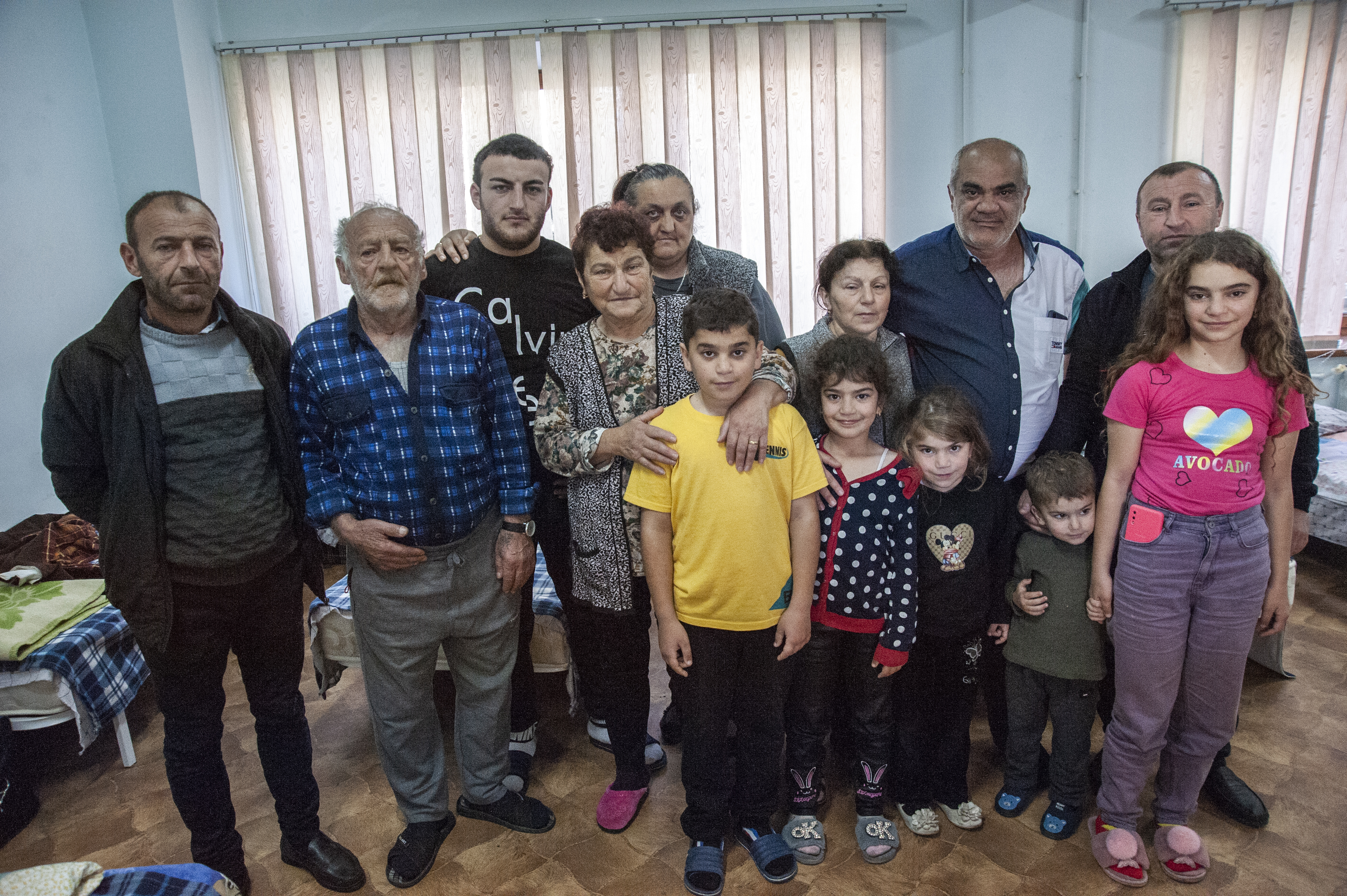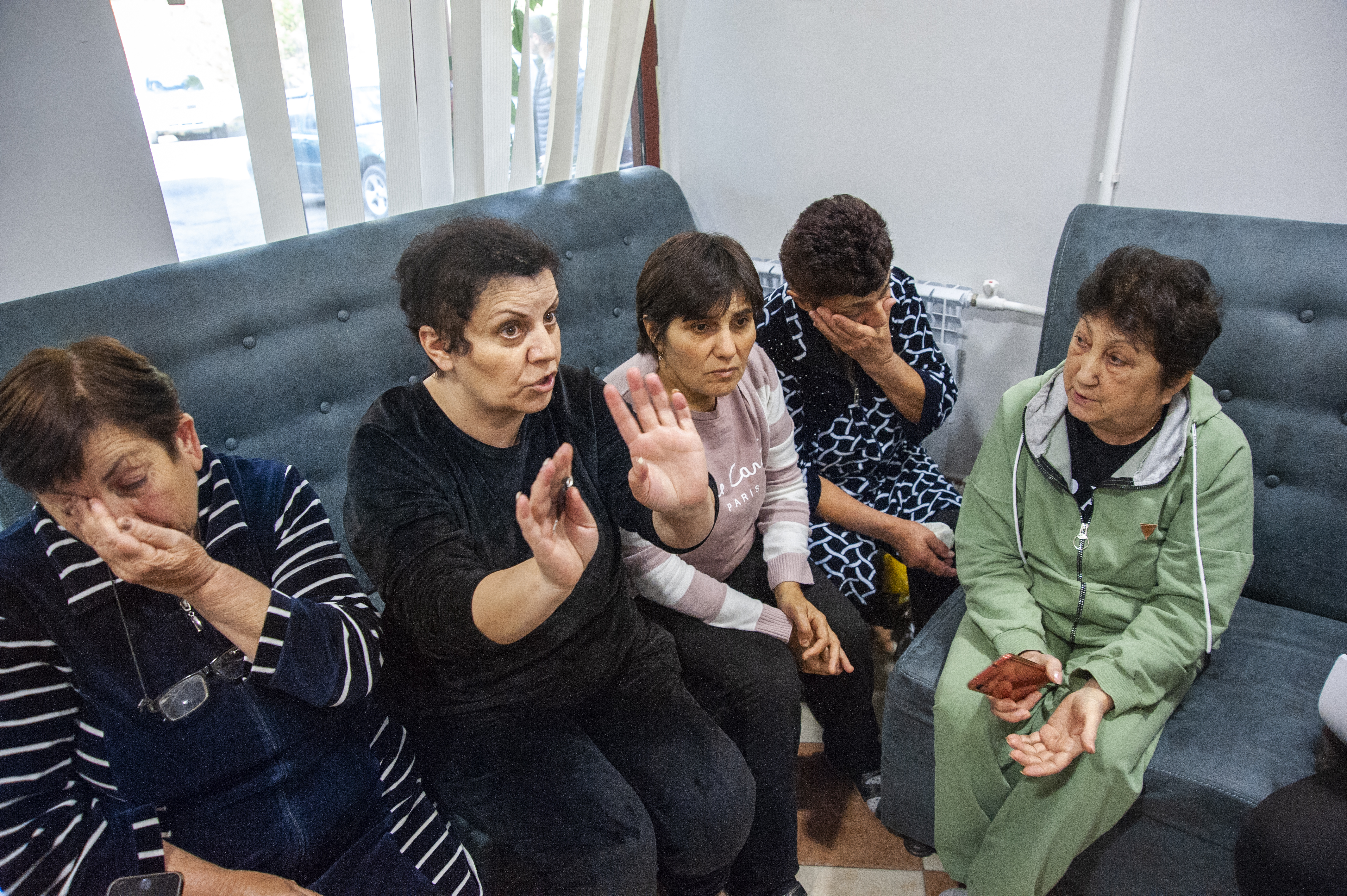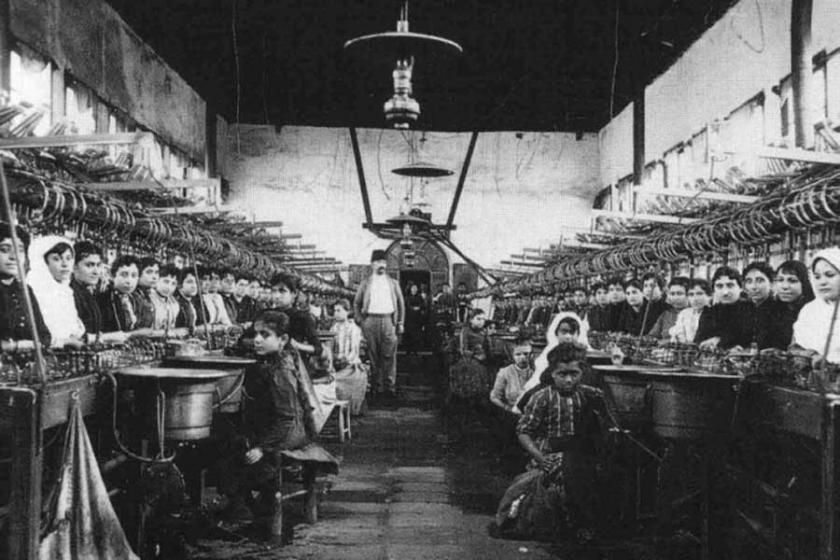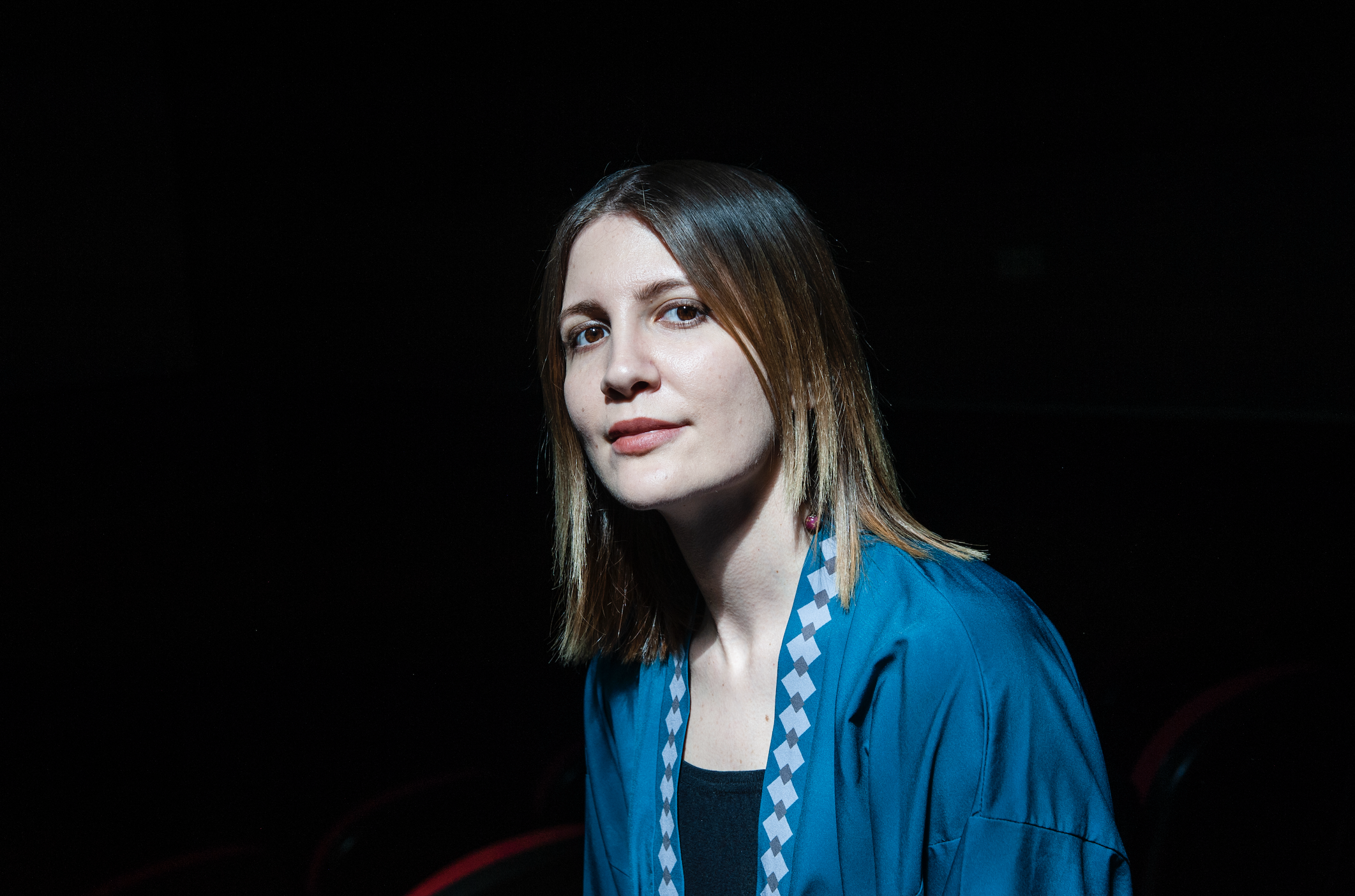On September 19, Azerbaijan launched a military operation against Nagorno-Karabakh. A ceasefire was reached on September 20 as the Nagorno-Karabakh (Republic of Artsakh) administration accepted the conditions. Right after the ceasefire, Karabakh Armenians took refuge in Armenia. After the war that followed the 9-month blockade imposed by Azerbaijan on Nagorno-Karabakh, 100 thousand ethnic Armenians had to leave their homes and took refuge in Armenia along with only a few belongings. Some of the displaced Karabakh (Artsakh) Armenians had a place to go in Armenia. However, a significant portion of them found themselves homeless and without a future. Pakrat Estukyan and Berge Arabian from Agos, travelled throughout Armenia in a one-week journalistic trip, meeting with displaced persons and non-governmental organisations. Agos will publish Estukyan's impressions and Arabian's photos as a series of articles. This week's coverage features interviews and impressions from the last day of the trip to Armenia.
Our destination today is the city of Gyumri. There is something about Gyumri. And it does not surprise me at all, as I have experienced this situation many times before. Every time there is a mention of Gyumri, memories of the past come to mind. I visited this city for the first time in September 1986. Back then it was called Leninakan. I vividly remember the time when we were shopping at the Leninakan marketplace together with Gayane Kuyrik. An Azeri woman was selling lavash in a basket. Gayane Kuyrik had a pointless discussion with the woman. She scolded the Azeri woman by saying, “This is Armenia, why don't you speak Armenian?” In those years, the Molakan community also preferred to speak Russian language in the Gyumri marketplace. As an Armenian from Turkey, I found it odd that a member of the minority was treated in this way. Meanwhile, Gayane instantly recovered from that tantrum and pointed Mher Mktrchyan, the legendary actor of Armenian cinema, who was shopping at a stall nearby. Afterwards, she pointed to the newly completed nine-storey buildings and talked about the rapid development of Leninakan.
Two years later, the buildings she proudly showed me were destroyed as Armenia experienced one of the most devastating earthquakes in its history. In 1988, means of communication were very limited compared to today. It was only two days after the earthquake, when we started to grasp how appalling the destruction was. Although the city of Spitak was reported as the epicenter of the earthquake, it was Gyumri that suffered the highest number of casualties due to its larger population.

The leaders of the Armenian community of Turkey were completely puzzled. After all, those were the times of the Cold War. But, it was not the time to sit and watch the situation. I went straight to the office of the Soviet airliner Aeroflot in Taksim. They informed me that they received instructions from Moscow, and they would fly relief personnel and aid materials to Armenia free of charge. Meanwhile, representatives of the Armenian community [foundations] (of Turkey), received necessary permits from the Police Department to provide in-kind and cash assistance to the earthquake victims. I myself, Yetvart Tovmasyan and Doctor Barkev Balımyan volunteered to accompany the trucks that would transport the collected in-kind aid. Garbis Uğurluyan would help us get visas. However, those visas could not be obtained, and the aid materials set off in three trucks belonging to the Turkish Red Crescent, without any accompanying person. The aid convoy was welcomed by Garbis Uğurluyan and Kevork Büyükhagopyan, who had arrived in Armenia via Moscow before the aid convoy.
The Yerevan-Gyumri road springs to mind so many different memories. On our way to Gyumri, we just passed by the monument erected in memory of the crew of the Yugoslavian aircraft that crashed while carrying relief materials for the 1988 earthquake. This is an interesting work of art. In great part, it was made out of the wrecked plane itself.
When we arrived in the city, our first stop was the 'Armenian House', a non-governmental organisation affiliated to the Etchmiadzin Cathedral . While it was so natural to see signposts such as 'Russian House', 'Assyrian House', 'Yazidi House' in Armenia, it was equally disturbing to come across an 'Armenian House' signpost. We would not mind seeing such a signpost in the US, France, Lebanon or Turkey, but it was quite strange for us to have it in Armenia.
Since we knew that discussing this issue, especially with nationalist circles, was a futile effort, we simply ignored it and entered the building. They were already waiting for our visit. The director of the organisation told us about the support they provided to people who were forcibly displaced from Nagorno-Karabakh. This particular office of the Armenian House has been used as a shelter for approximately 10 families, it has also become an important centre for the distribution of donated household and clothing items.

Gyumri had a surprise for us in store. My wife came across a relative she had never met before. They immediately engaged in a deep conversation, as if they had known each other for 40 years. They cherished their chance encounter till the end of our trip in Gyumri.
What we observed in Gyumri was quite similar to that of other places we visited: sorrow caused by the loss of the country that was ingrained as our homeland. Although many families lost young children, the loss of their ancestral land was yet another heavy burden on on their shoulders. Besides, there is a lot of uncertainty...
It is already one month after the evacuation of Nagorno-Karabakh, and we are on the last day of our journalistic trip to meet the forcibly displaced people. Our destination today is the city of Tsaghkadzor. Tsaghkadzor is known as the capital of sports in Armenia. Its owes this reputation to the large sports complex built prior to the 1980 Moscow Olympics. In those years, many athletes from 15 Soviet republics came here to exercise and prepare for the Olympics.
Tsaghkadzor is also a recreational summer resort for Armenians. In fact, we are moving towards a building that served as the recreation facility of Yerevan State University in the past. Our acquaintances from Armenia accompanied us here as well. Just as they did in Artashat, they came here with their vehicles carrying relief material, and brought along various household items, especially kitchen utensils.
Something that caught our attention during the delivery of these items was the bureaucratic procedures in place. The relief materials transported were delivered to the authorities along with their supporting documents, delivery receipts were signed, and everything was put in record. In turn, as the authorities handed over the same relief items to the users, there was again a systematic exchange of delivery receipts and signatures.
After we returned from Armenia, we saw some news stories about displaced Nagorno-Karabakh Armenians who applied for citizenship in Armenia. Strangely enough, this was something we had never thought of. Yet, this was also the stark reality. These people were citizens of the independent Nagorno-Karabakh Republic, which has existed de facto for 30 years. And now, that very republic has officially declared its dissolution.
This was our longest day in Armenia. We would need to leave the hotel at 4 in the morning to catch our return flight to Istanbul. This meant we would spend a whole night without sleeping. On the other, we actually needed to carve out some time for ourselves too. Berge decided to spend his last hours in Yerevan with his elder brother Hratch. We had the chance to spend a few extra hours with our friends in Armenia.

As we embarked upon this journalistic trip, we were determined to stay out of current politics and focus all our attention on listening to and conveying the problems of the people forcibly displaced from Nagorno-Karabakh. We maintained our resolve till the end. The political dimension of the issue became more apparent after our return to Turkey. In response to a journalist who asked about the prospects of normalisation of relations with Armenia, President Erdoğan said, "If Armenia wants to make progress in this process, it must meet Azerbaijan's expectations." Apparently, on the Turkish side, the policy of "throwing the ball out of bounds" is still in place. President's statement reminded me of the bilateral normalisation efforts revived in the aftermath of the Second Nagorno-Karabakh War. After the fall of Nagorno-Karabakh, Erdoğan stated that now that Azerbaijan took back its occupied lands the problem was resolved, and hence there was no longer an obstacle before the normalisation of relations with Armenia. Accordingly, retired ambassador Serdar Kılıç from Turkey and Deputy Speaker of Armenian Parliament Ruben Rubinyan were appointed as special representatives.
In those days, Armenian journalists were questioning the sincerity and credibility of Erdoğan's calls for negotiations without preconditions. My predictions aside, the answer to the question is evident in the statement I quoted above.
(Translation: Burcu Becermen)
(Chapter one:Hope and despair among Karabakh Armenians)
(Chapter two: Losing the homeland once again)






